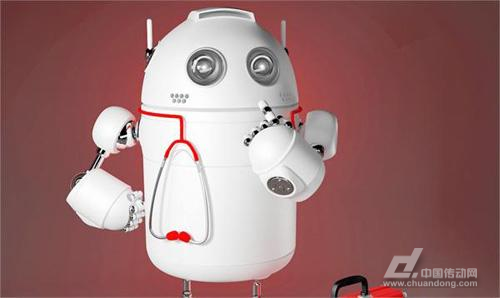The development of the medical robot industry is an important part of China's realization of Industry 4.0. With the release of a series of important documents such as “Made in China 2025†and “Robot Industry Development Plan (2016-2020)â€, high-smart medical equipment such as medical robots has become One of the key areas for China's development in the next few years.
As the earliest medical device in the smart medical field, there have been star products such as the Da Vinci surgical system of Intuitive Surgery Inc. and the ReWalk Rehabilitation Exoskeleton System of Israel. Safe and stable, not easily affected by the external environment, and more accurate medical robots have played a very important role in surgery, rehabilitation, and medical services, and have a huge market potential.

According to the Boston Consulting Group's estimates, the annual revenue of medical robots is 4 billion U.S. dollars. By 2020 it will reach 11.4 billion U.S. dollars. The most well-known medical robot company, Intuitive Surgery, achieved revenue of 2.1 billion U.S. dollars in 2014.
In mid-May 2017, many experts at the Summit of the World Medical (Surgical) Robot Innovation and Development Forum stated that the global medical robot industry is in its infancy and that China, the United States, and Europe are all in the "infancy period."
In addition to the technical problems faced by the industry, the other issue is capital. The medical robot industry requires a large amount of capital investment, the investment cycle is long, and the clinical application from technology to products generally takes more than ten years.
Another important component of medical robotics is rehabilitation robots. In fact, 500,000 people worldwide suffer from spinal cord injury (SCI) each year, as well as patients with stroke and neurodegenerative diseases who can benefit from rehabilitation robotics. Powered exoskeletons, rehabilitation robots and orthoses, prostheses: The entire market is huge and will gradually increase market penetration.
At present, medical robots are mainly concentrated in the North American market. The domestic market has just emerged and the market penetration rate is less than 5%. There is a huge market space and potential for development. Foreign companies have regarded the Chinese market as a key point for business improvement. According to the forecast of the research organization GrandViewResearch, the market share of exoskeleton robots and assistive rehabilitation robots will increase significantly from 2012 to 2022.
China has a population of 1.3 billion. Compared with the United States, the demand for medical robots is very large. Independent research and development is undoubtedly the most direct way to reduce the price of medical robots. In response to expensive equipment purchase prices and scarce purchasing indicators, some organizations have begun independent research and development of surgical robot systems.
Therefore, in China, the country with the world's largest population and hospitals is forming the world's largest digital medical equipment consumption and competitive market. The future of medical robots is immeasurable.
However, at present, due to the late start, although the number of domestic medical robot companies has increased, but the technical content is relatively low, and the products are mostly concentrated in the field of low-end medical devices.
There are not many domestic players in medical robots, and the usage rate and penetration rate are relatively low. However, these deficiencies show that China's medical robot market has huge development space. As early as April 2016, the Ministry of Industry and Information Technology, the National Development and Reform Commission and other three ministries jointly issued the "Robotic Industry Development Plan (2016-2020)" and proposed that by 2020, the annual sales revenue of service robots in China will exceed 30 billion yuan, helping the elderly and helping the disabled. Medical rehabilitation and other fields achieve low-volume production and application.
In 2017, medical robots will become the largest investment in the service robot industry, and in 2018 they are expected to become new opportunities for investors in emerging industries. With the advancement of science and technology, we believe that in the future, medical robots will be more intelligent, have the ability to handle big data and deep learning, have a good human-computer interaction experience, become more dexterous and more convenient, and use “intelligent intelligence†to escort human health.
The latest Windows has multiple versions, including Basic, Home, and Ultimate. Windows has developed from a simple GUI to a typical operating system with its own file format and drivers, and has actually become the most user-friendly operating system. Windows has added the Multiple Desktops feature. This function allows users to use multiple desktop environments under the same operating system, that is, users can switch between different desktop environments according to their needs. It can be said that on the tablet platform, the Windows operating system has a good foundation.
Windows Tablet,New Windows Tablet,Tablet Windows
Jingjiang Gisen Technology Co.,Ltd , https://www.gisentech.com